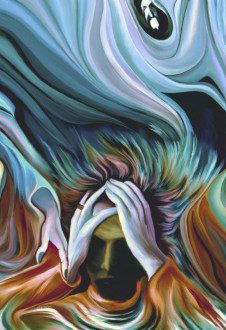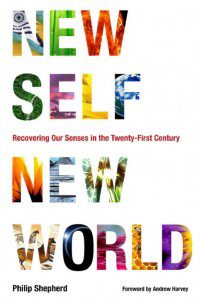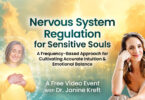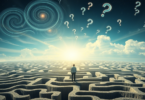Guest Writer for Wake Up World
Our modern inclination to live in our heads has left us dissociated from the body – and we commonly describe that dissociation as a mind/body split. Our description, though, merely deepens the problem. Quite simply, there is no such thing as a body that is mindless, unless you are referring to a body that is dead.
Every living body is thinking continuously. The division we experience and are trying to describe is real enough – but it is not a mind/body split; it is a mind/mind split. We have split the abstract thinking in our heads from the deeply connected thinking of our beings.
Of course, that spit feels normal to us, so it’s hard to realize that we have habituated a kind of schizophrenia – a term that means ‘divided mind’. And because we identify so closely with the mind in the head (“Keep your head”, “Two heads are better than one”, “I need to get my head around this”), we can eventually forget that the thinking of the body even exists.
[pro_ad_display_adzone id=”110028″]
We have all been taught by our culture since childhood to divide our minds, so this schizophrenia touches everyone. You live with a divided mind, and so do I. The effect is profound: it actually circumscribes our experience of consciousness. By identifying real intelligence only as abstract thinking (the quality we measure when we test someone’s IQ), we center our sense of self in the head, where abstract thinking is experienced; this disconnects us from the world to which only the body’s intelligence can attune us. And so we come to experience our minds as phenomena that are contained in the cranium, enclosed from both body and world; we come to experience consciousness in the brain, and the brain alone.
You’ll find an important clue about where this has taken us if you delve into the word conscious. It is made of two parts, con-, meaning “with, together” and –scious, which means “to know” (the root of our word science). Our modern schizophrenia neglects the “with, together” part, turning our experience of consciousness into something cut off from the world: objective knowing, or ‘science’. But the deeper story behind the word consciousness is telling: it comes from a Latin verb that means “to be mutually aware”. Aboriginal societies commonly live in a mutual awareness with the world, aware not just of knowing, but of mutual knowing. Our historic experience of the material world shows the same attunement: the word material traces back to an ancient word meaning ‘mother’. Currently we are so alienated from that experience we have difficulty accessing it. We don’t learn from nature, we learn about it. And we assume that our objective knowing of the material world reveals its reality, even though that knowing is created by only one part of a mind divided.
Central to our schizophrenic state is our belief that the almighty brain actually creates consciousness – and we cling to that belief, even as reality refutes it. That belief represents human consciousness as being enclosed in the brain, animating the body’s mechanics in pursuit of selfish aims. But consciousness consistently shows an ability to affect the world around it in non-local ways. That is, mere thought can create change in the world. For instance, light can behave either as a wave or a particle. How it behaves isn’t random, but is determined by our ability to observe it. If we are able to track light and know its path, it behaves as a particle; if not, it will behave as a wave. The phenomenon looks uncannily like ‘mutual awareness’
Neuroscience doesn’t defend its model by speculating about how the brain’s consciousness might reach out of the skull, interact with the material world and change it like that. Nor does it address the effect of human consciousness on random event generators, skewing their results through mere intention. When mind affects material outcomes in measurable ways, neuroscience demurely looks the other way. So on the one hand you have its insistence that consciousness is an epiphenomenon created by brain matter, and on the other a refusal to address measurable, duplicable results in which human consciousness achieves non-local outcomes.
I believe that this stubborn insistence is rooted in personal experience rather than science – specifically the experience of mind and world that our schizophrenic condition delivers to us. A scientist who lives in her head and experiences her thinking there will naturally begin with the question, “How does the brain create consciousness?” rather than asking “What model of consciousness might account for all of its attributes?”
But if mind and the material world are inextricably linked – if consciousness is a property that suffuses matter, as it does the body – what agency might it have? How might it dance with and show up in our world without our being aware of it? And might our ability to notice that dance have been limited by the assumption that our individual, human experience of consciousness characterizes consciousness itself? That the divided mind reveals the whole of the story?
The impression we have that our experience of consciousness reveals its full and true nature is akin to our belief that our experience of reality reveals its full and true nature. But we only experience reality as our senses reveal it to us. If I throw a stick for my dog into a pile of sticks, she knows just which one I’ve thrown. She so easily smells the trace of my hand on it that it may as well be painted fluorescent orange. A dog’s nose detects smells more sensitively than any man-made machine can. What a dog reads on a breeze or a bush is invisible to us. A snake smells the world in stereo. The world as seen by a fly or as heard by a dolphin would be unrecognizable to us. What we accept as reality is to the whole as a single needle is to a towering redwood. We sort of know that – or remember it every once in a while. But when it comes to our understanding of what thinking is, we remain trapped within the box of our assumptions, blind to the fluorescent orange occurrences flourishing all around us. We are even mostly blind to the thinking that courses through the intelligence of the body, because its language of thought is sensation rather than abstraction. It’s worth noting, in that regard, that our word ‘sensation’ derives from a Latin root, sentire, which means “to think, to feel.” Before we confined our thinking in the head and severed it from feeling, thinking and feeling were recognized as one.
If we can’t recognize as thinking what courses through the body, what chance do we have then to recognize as thinking what courses through the world? Aboriginal cultures, which find it absurd to ‘think with the head’, not only feel and recognize the thinking of the world all around them, they rely on it to guide them. Exquisite, eye-popping examples are documented in a lovely little book, Original Wisdom, by Robert Wolff. The “original wisdom” of the title is the wisdom that our divided state keeps us from recognizing. It is a wisdom that leaves behind the locked-in thinking of the cranium, and enters the mutual awareness of the world.
And that leaves me with this question: if we cannot detect the mindful harmonizing of the world, how can we join it? And if we can’t join it, how can we achieve anything other than unwitting opposition to it, even – and this is so hard for us to realize – when we are earnestly trying to solve the problems we have created? All we seem to know is how to impose some new idea on the world to try to fix it. Such solutions are all top-down – and we don’t employ them because they are the best strategy; we employ them because our relationship with the body is top-down. It’s what we know.
I think an uncomfortable truth waits to be recognized: we cannot rectify the divisions and imbalances we have created around us as long as we remain divided and imbalanced within ourselves. If we continue to neglect our deeply divided state, we will continue to impoverish not only the miraculous, mindful diversity of the natural world to which we belong, but also our ability to be present to our own lives within it.
I will work towards overcoming that division as long as I live. It is only in wholeness that we can attune to the whole. It is only in the mutual awareness revealed by such wholeness that we can truly nurture and be nurtured by the world around us. And I believe that once the present is felt to be truly mindful, we will hear it calling each of us towards a personal wholeness that doesn’t stand apart from the world, but is realized within its embrace.
Further reading from Philip Shepherd:
- Wholeness and Desire: Experiencing Heart-Centered Sexuality
- The One Thing We Completely Understand
- The Lotus Eaters: Finding Remembrance and Coherence in a World of Addiction and Distraction
About the author:
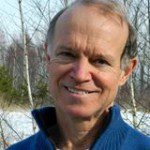 Philip Shepherd is recognized as an international authority on embodiment. His unique techniques have been developed to transform our experience of self and world and are based on the vision articulated in his celebrated book, New Self, New World. Philip understands that most of our problems, individually and globally, stem from a single root cause: we have created a culture of disconnection. The approach he takes heals the frantic, restless pace of the intelligence in the head, which tends to run on overdrive, by uniting it with the deep, present and calm intelligence of the body.
Philip Shepherd is recognized as an international authority on embodiment. His unique techniques have been developed to transform our experience of self and world and are based on the vision articulated in his celebrated book, New Self, New World. Philip understands that most of our problems, individually and globally, stem from a single root cause: we have created a culture of disconnection. The approach he takes heals the frantic, restless pace of the intelligence in the head, which tends to run on overdrive, by uniting it with the deep, present and calm intelligence of the body.
You can follow Philip’s work and contact him via his website www.philipshepherd.com and www.facebook.com/philip.shepherd.16.
New Self, New World: Recovering Our Senses in the Twenty First Century
If we were to consider the towering crises faced by the 21st century and trace them to their roots, we would find that each of them leads back to the same cultural force: the one that tells us who we are. Culturally speaking, ‘living in the head’ is the elephant in the room: it dominates all we do, and no one seems willing to start a conversation about it. New Self, New World initiates that conversation.
Written by author Philip Shepherd, New Self, New World traverses disciplines and boundaries with ease and precision, gathering wisdom as it goes. It is a philosophical masterwork, a spiritual handbook, a sweeping historical renewal of the human story, and an alignment of the profoundest mystical teachings of the world. Between its two covers awaits a lifetime of adventure.
New Self, New World is available here on Amazon, or visit PhilipShepherd.com for more information.
[pro_ad_display_adzone id=”110027″]

